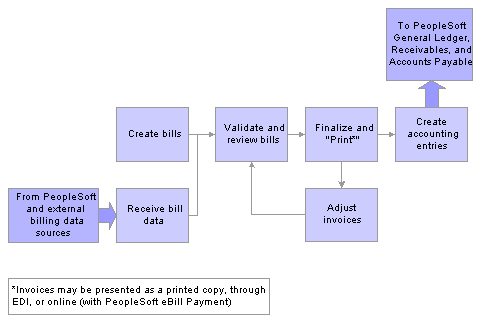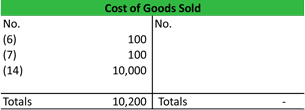Part A: Analyze, Record & Post Adjusting Entries, Prepare Adjusted Trial BalanceReversing entries can be set to automatically reverse in a future period, thereby eliminating this risk. The transactions which are recorded using adjusting entries are not spontaneous but are spread over a period of time.At the end of the accounting period, some income and expenses may have not been recorded, taken up or updated; hence, there is a need to update the accounts. Accrued revenues are money earned in one accounting period but not received until another. Accrued expenses are expenses that are incurred in one accounting period but not paid until another.The matching principle states that expenses have to be matched to the accounting period in which the revenue paying for them is earned. An adjusting journal entry is an entry in a company’s general ledger that occurs at the end of an accounting period to record any unrecognized income or expenses for the period. When a transaction is started in one accounting period and ended in a later period, an adjusting journal entry is required to properly account for the transaction. Adjusting journal entries can also refer to financial reporting that corrects a mistake made previously in the accounting period. The adjusting entry will ALWAYS have one balance sheet account (asset, liability, or equity) and one income statement account (revenue or expense) in the journal entry.
Understanding Adjusting Journal Entries
Under the accrual method of accounting, a business is to report all of the revenues (and related receivables) that it has earned during an accounting period. A business may have earned fees from having provided services to clients, but the accounting records do not yet contain the revenues or the receivables.
What Are Adjusting Entries?
Estimates are adjusting entries that record non-cash items, such as depreciation expense, allowance for doubtful accounts, or the inventory obsolescence reserve. Making adjusting entries is a way to stick to the matching principle—a principle in accounting that says expenses should be recorded in the same accounting period as revenue related to that expense. Similarly, the company uses electricity each day but receives only one bill per month, perhaps on the 20th day of the month (for electricity used through the 15th day of the month). Adjusting entries are made at the end of the accounting period (but prior to preparing the financial statements) in order for a company’s financial statements to be up-to-date on the accrual basis of accounting. The main purpose of adjusting entries is to update the accounts to conform with the accrual concept.If that is the case, an accrual-type adjusting entry must be made in order for the financial statements to report the revenues and the related receivables. Adjusting entries are journal entries made at the end of an accounting cycle to update certain revenue and expense accounts and to make sure you comply with the matching principle.Account adjustments are entries made in the general journal at the end of an accounting period to bring account balances up-to-date. They are the result of internal events, which are events that occur within a business that don’t involve an exchange of goods or services with another entity. They are accrued revenues, accrued expenses, deferred revenues and deferred expenses. An adjusting journal entry involves an income statement account (revenue or expense) along with a balance sheet account (asset or liability).

So, when you first make a prepaid expense payment, you record the entire amount as an asset. At the end of each successive accounting period, you can record the used-up portion of the prepaid expense as an expense. Prepaid expenses that need an adjusting entry usually include things like rent, insurance and office supplies. Since the firm is set to release its year-end financial statements in January, an adjusting entry is needed to reflect the accrued interest expense for December.

Accrued Revenue
Reversing entries will be dated as of the first day of the accounting period immediately following the period of the accrual-type adjusting entries. In other words, for a company with accounting periods which are calendar months, an accrual-type adjusting entry dated December 31 will be reversed on January 2. These categories are also referred to as accrual-type adjusting entries or simply accruals. Accrual-type adjusting entries are needed because some transactions had occurred but the company had not entered them into the accounts as of the end of the accounting period. In order for a company’s financial statements to include these transactions, accrual-type adjusting entries are needed.
- They are accrued revenues, accrued expenses, deferred revenues and deferred expenses.
- They are the result of internal events, which are events that occur within a business that don’t involve an exchange of goods or services with another entity.
- Account adjustments are entries made in the general journal at the end of an accounting period to bring account balances up-to-date.
Not all journal entries recorded at the end of an accounting period are adjusting entries. For example, an entry to record a purchase on the last day of a period is not an adjusting entry. An adjusting entry always involves either income or expense account. Adjusting entries are journal entries recorded at the end of an accounting period to adjust income and expense accounts so that they comply with the accrual concept of accounting. Their main purpose is to match incomes and expenses to appropriate accounting periods.
How to Make Entries for Accrued Interest in Accounting
The adjusting entry will debit interest expense and credit interest payable for the amount of interest from December 1 to December 31. For example, an entry to record a purchase of equipment on the last day of an accounting period is not an adjusting entry. The purpose of adjusting entries is to convert cash transactions into the accrual accounting method. Accrual accounting is based on the revenue recognition principle that seeks to recognize revenue in the period in which it was earned, rather than the period in which cash is received. As an example, assume a construction company begins construction in one period but does not invoice the customer until the work is complete in six months.
Types of Adjusting Entries
Account adjustments, also known as adjusting entries, are entries that are made in the general journal at the end of an accounting period to bring account balances up-to-date. Unlike entries made to the general journal that are a result of business transactions, account adjustments are a result of internal events. Internal events are those events that have occurred in the business that don’t involve an exchange of goods or services with another entity. According to the matching principle, you have to match the cost of the rent for each month to money earned in that month.
Learn About the 8 Important Steps in the Accounting Cycle
Adjusting entries an important part of the accounting cycle and are made at the end of an accounting period. They are used to update revenue and expense accounts to make sure that expenses are matched to the accounting period for which you’ve earned the necessary revenue, as required by the matching principle.Deferred revenues are money that a business has been paid in advance for a service that will be provided later. Deferred expenses are expenses that have been paid in advance and will be expensed out at a later date.It typically relates to the balance sheet accounts for accumulated depreciation, allowance for doubtful accounts, accrued expenses, accrued income, prepaid expenses, deferred revenue, and unearned revenue. Income statement accounts that may need to be adjusted include interest expense, insurance expense, depreciation expense, and revenue. The entries are made in accordance with the matching principle to match expenses to the related revenue in the same accounting period. The adjustments made in journal entries are carried over to the general ledger which flows through to the financial statements. Before financial statements are prepared, additional journal entries, called adjusting entries, are made to ensure that the company’s financial records adhere to the revenue recognition and matching principles.
What are the 5 types of adjusting entries?
Adjusting entries are necessary because a single transaction may affect revenues or expenses in more than one accounting period and also because all transactions have not necessarily been documented during the period.Remember the goal of the adjusting entry is to match the revenue and expense of the accounting period. The purpose of adjusting entries is to accurately assign revenues and expenses to the accounting period in which they occurred. Some of these accounting adjustments are intended to be reversing entries – that is, they are to be reversed as of the beginning of the next accounting period. Otherwise, inattention by the accounting staff may leave these adjustments on the books in perpetuity, which may cause future financial statements to be incorrect.Additionally, periodic reporting and the matching principle necessitate the preparation of adjusting entries. Remember, the matching principle indicates that expenses have to be matched with revenues as long as it is reasonable to do so.
You must create an account to continue watching
In summary, adjusting journal entries are most commonly accruals, deferrals, and estimates. Accruals are revenues and expenses that have not been received or paid, respectively, and have not yet been recorded through a standard accounting transaction. Deferrals refer to revenues and expenses that have been received or paid in advance, respectively, and have been recorded, but have not yet been earned or used.
What do you mean by adjusting entries?
Adjusting entries are journal entries made at the end of an accounting cycle to update certain revenue and expense accounts and to make sure you comply with the matching principle. The matching principle states that expenses have to be matched to the accounting period in which the revenue paying for them is earned.
